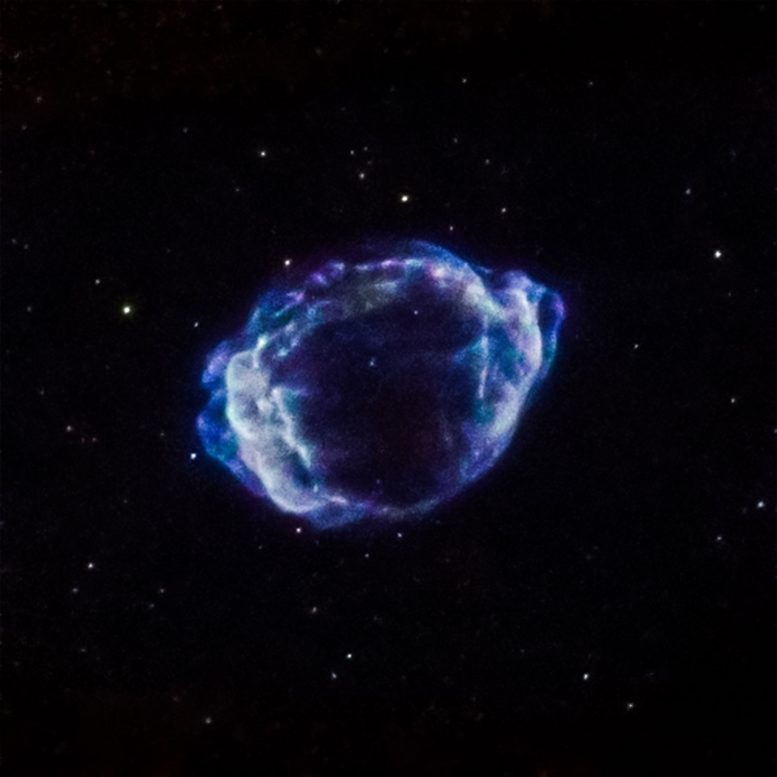
Using NASA’s Chandra X-ray Observatory and the NSF’s Jansky Very Large Array, astronomers have determined the likely trigger for the most recent supernova in the Milky Way.
Astronomers had previously identified G1.9+0.3 as the remnant of the most recent supernova in our Galaxy. It is estimated to have occurred about 110 years ago from the vantage point of Earth, in a dusty region of the Galaxy that blocked visible light from reaching Earth. This Chandra image shows G1.9+0.3 where low-energy X-rays are colored red, medium-energy X-rays are green, and a higher-energy band of X-rays is blue.
G1.9+0.3 belongs to the Type Ia category, an important class of supernovas exhibiting reliable patterns in their brightness that make them valuable tools for measuring the rate at which the universe is expanding. Most scientists agree that Type Ia supernovas occur when white dwarfs, the dense remnants of Sun-like stars that have run out of fuel, explode. However, there has been a debate over what triggers these white dwarf explosions. Two primary ideas are the accumulation of material onto a white dwarf from a companion star or the violent merger of two white dwarfs.
The researchers in this latest study applied a new technique that could have implications for understanding other Type Ia supernovas. They used archival Chandra and VLA data to examine how the expanding supernova remnant G1.0+0.3 interacts with the gas and dust surrounding the explosion. The resulting radio and X-ray emission provide clues as to the cause of the explosion. In particular, an increase in X-ray and radio brightness of the supernova remnant with time is expected only if a white dwarf merger took place, according to theoretical work.
This result implies that Type Ia supernovas are either all caused by white dwarf collisions, or are caused by a mixture of white dwarf collisions and the mechanism where the white dwarf pulls material from a companion star. It is important to identify the trigger mechanism for Type Ia supernovas because if there is more than one cause then the contribution from each can change over time, affecting their use as “standard candles” in cosmology.
A paper describing these results appeared in the March 1st, 2016 issue of The Astrophysical Journal. The authors on the paper are Sayan Chakraborti, Francesca Childs, and Alicia Soderberg (Harvard). NASA’s Marshall Space Flight Center in Huntsville, Alabama, manages the Chandra program for NASA’s Science Mission Directorate in Washington. The Smithsonian Astrophysical Observatory in Cambridge, Massachusetts, controls Chandra’s science and flight operations.
Reference: “Young Remnants of Type Ia Supernovae and Their Progenitors: A Study of SNR G1.9+0.3” by Sayan Chakraborti, Francesca Childs and Alicia Soderberg, 25 February 2016, The Astrophysical Journal Letters.
DOI: 10.3847/0004-637X/819/1/37
arXiv:1510.08851
Never miss a breakthrough: Join the SciTechDaily newsletter.